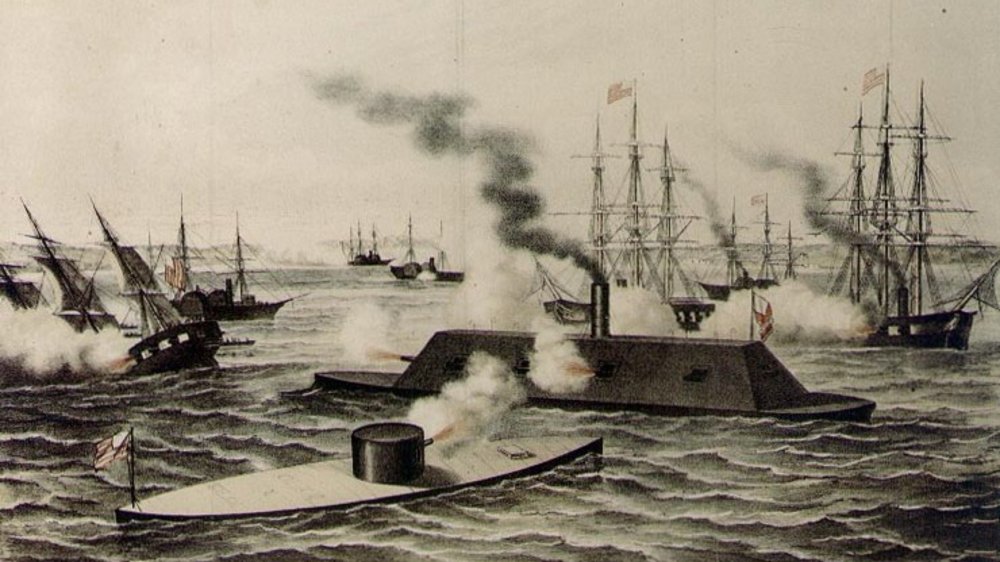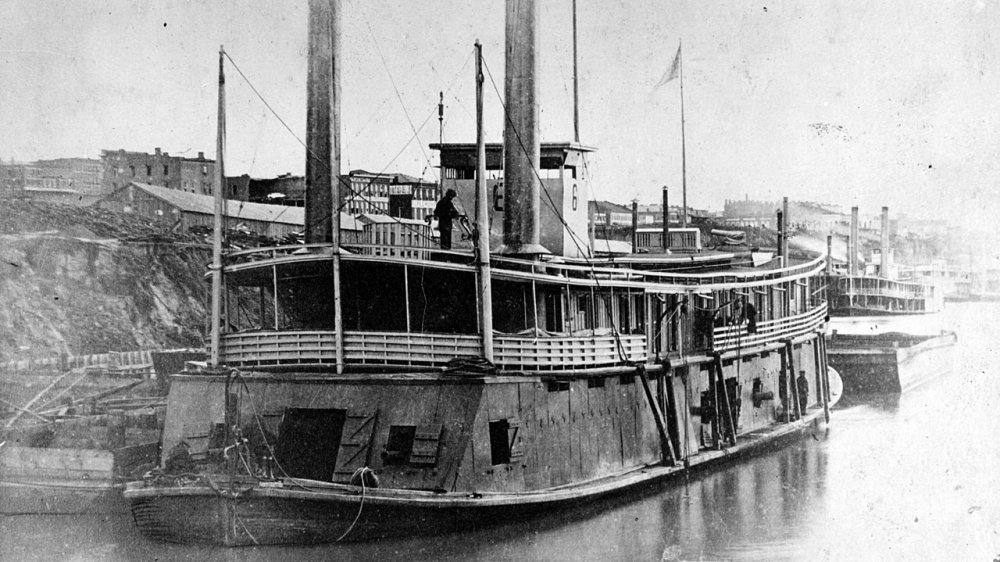The Dark Truth About The Civil War's Ironclads
The U.S. Civil War has many salient associations — secession, the cessation of slavery, the assassination of Abraham Lincoln, Lincoln's Emancipation Proclamation, the Confederate flag, the ravages at the Battle of Antietam, and the list goes on. But one thing that might not go on the list for a lot of people is a battle in which two clumsy-looking ships spend hours blasting each other with cannons at point-blank range before giving up because the balls keep harmlessly bouncing off of each other. And yet during the Civil War, that was precisely how the world's first battle between ironclads panned out, per History.
Invented by French and British forces during the Crimean War, according to the Encyclopedia Britannica, ironclads began as heavily armed and armored barges before France developed the first ironclad ship. The very first Civil War ironclads and the first in the world to fight warships were armored gunboats built by Union Captain James Buchanan Eads, the cousin of future President James Buchanan. This led to some of the earliest Union victories of the entire conflict.
The Confederacy would create a metal behemoth, the CSS Virginia, which was likened to a "floating barn roof in appearance. The Union responded with the Monitor, described by some as a "tin can on a shingle." The historic but awkward showdown between these aqua-juggernauts would end in a stalemate as they figuratively and literally failed to make a major dent in each other.
The Union's iron pirate ships
The Civil War's ironclads weren't just weapons of war. Colorado State University Professor and History Department chair Robert Gudmestad argues in an article for the Conversation that the Union used ironclads and more lightly armored vessels called "tinclads" as instruments of plunder. It began when Admiral David Dixon Porter gave Union commanders carte blanche to commandeer civilian buildings, food, and other private property. This led to brutal retribution against civilians who assisted the Confederacy. A 14-year-old Union cabin boy by the name of George Yost recalled that in retaliation for a guerrilla attack by Confederate Rebels, 40 Union sailors traveled to a plantation and burned "up all the houses barns and everything combustible near the scene of the assassination."
But the ironclads also functioned like iron pirate ships as Union troops went on "plundering sprees." In one such excursion, they snathced up "150 chickens, 600 pounds of bacon, a bull, some geese and a couple of guinea hens." Any hopes that such attacks would dissuade civilians from aiding the Rebels were basically dashed against the rocks of resentment.

